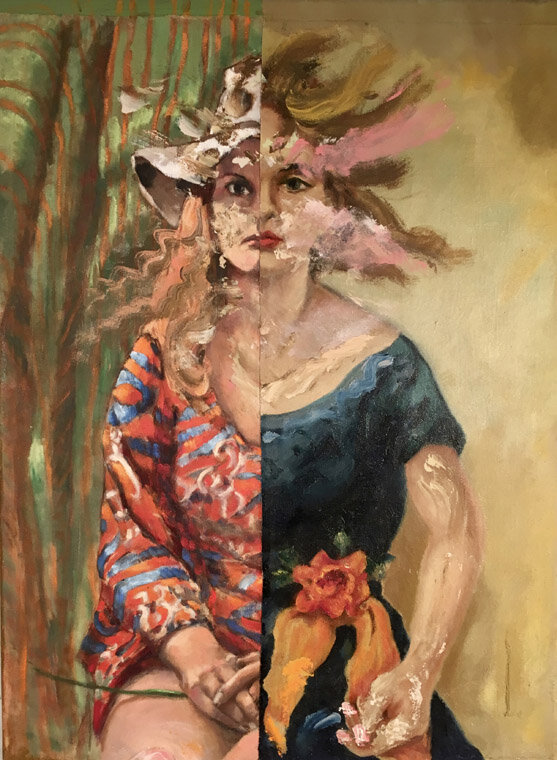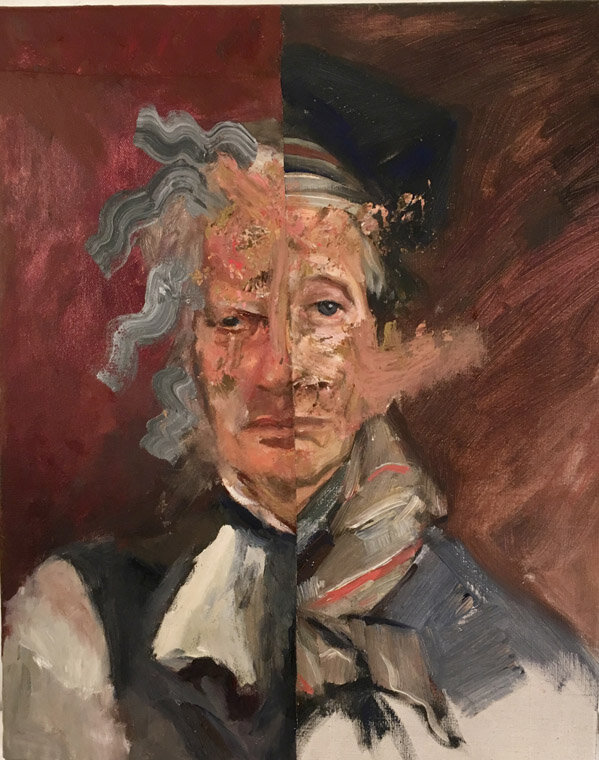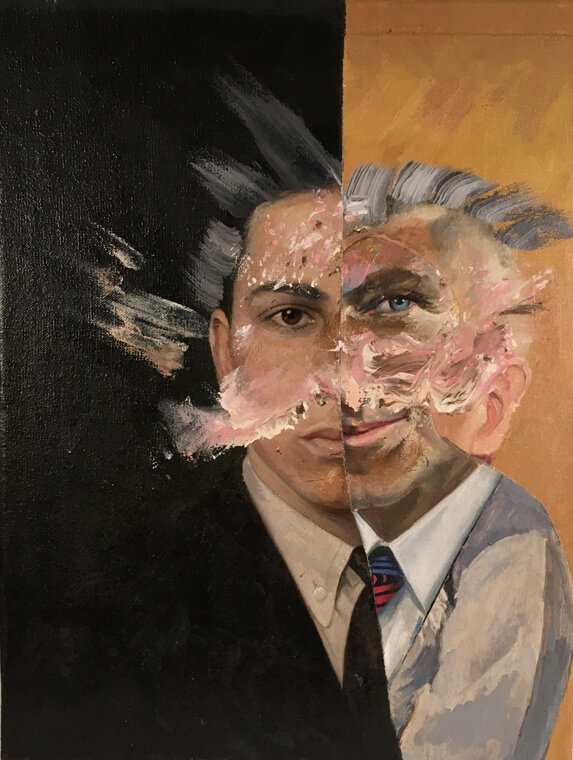JOHN BAKER: COLLAGE PAINTINGS
My collage paintings in this exhibition revive and continue a type (a genre) popular in the 17th Century in the Netherlands: the “tronie”. These were paintings of the human face but they were not meant to be recognized or “read” as portraits of individuals. Tronies were understood as depictions whose typicality and familiarity to the audience were the bases of their popularity. Such recognizable personifications, of the vanity of youth, the prayerfulness of old age and the “otherness” of exotic peoples were frequently depicted by 17th Century Dutch artists, including Rembrandt. For this exhibition I have revived the tronie type specifically for the psychoanalytic community by creating tronies of psychological incoherence, instability and duality.
******
A recent post-modernist survey of the history (or archaeology) of the idea of insanity, Robert Snell’s Portraits of the Insane: Theodore Gericault and the Subject of Psychotherapy (2017), places modern conceptualizations of madness in their evolving socio-political contexts (mainly in 19th Century France) in much the same way as Foucault contextualized the transformation of late medieval ideas of insanity during the reign of Louis XIV. (Foucault, (1961), Madness and Civilization: A History of Insanity in the Age of Reason). Whatever one may think of the reduction of clinical awarenesses to representations or expressions of socio-political forces, Snell’s book nonetheless contains some stimulating fragments of historical information. Among these is Snell’s discussion of the ideas of William Cullen (1710-1790), a major figure of the Scottish Enlightenment, who saw madness as “some inequality in the excitement of the brain” and nervous system for which he coined the term neurosis (Snell, p. 54). Snell also discusses the theories of Johann Christian Reil (1759-1813), a psychiatrist of the German Romantic era, who held that madness was a result of a loss of Gemeingefuhl, of a basic feeling of things hanging together (Snell p. 56). These two old, Pre-Freudian, definitions happen to closely approximate in words what I was trying to realize, to cause to appear, in my collage paintings.


